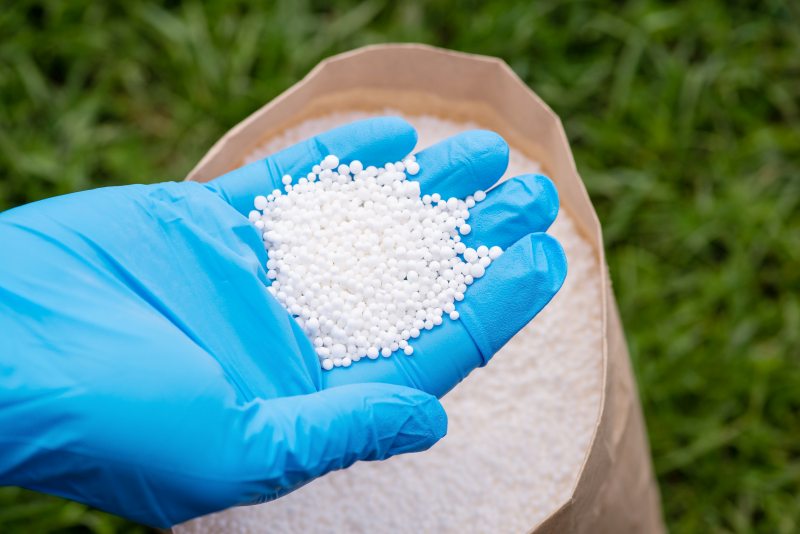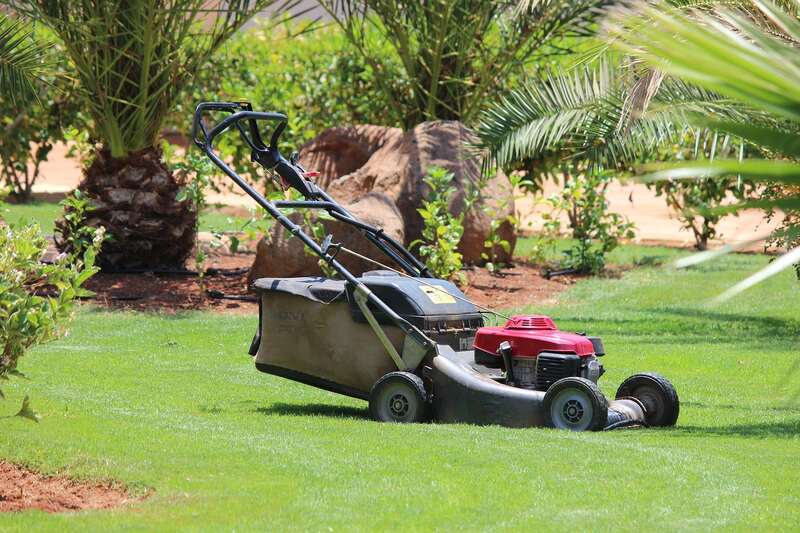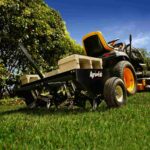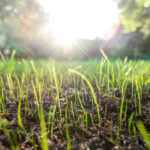
Spotted a tempting ad for liquid lawn aeration, claiming it’s a cheap, hassle-free alternative to traditional methods? But does liquid lawn aeration work? While it promises to break up soil and promote root growth, there is no strong scientific evidence to fully back these claims.
Curious about how it compares to mechanical aeration? We’ll explore what liquid lawn aeration involves, discuss its effectiveness, and guide you on effective aeration methods (Hint: For best results, opt for core aeration).
What Is Liquid Lawn Aeration?
Imagine your lawn’s soil is like a sponge — when it’s too compact, it can’t absorb water, nutrients, or air efficiently. That’s where liquid lawn aeration comes in.
Unlike traditional aeration methods that involve physically removing plugs of soil, liquid aeration uses a specialized solution to loosen the soil from within.
This solution typically contains a mix of surfactants and soil conditioners that penetrate the soil, breaking up compacted areas and creating pathways for air, water, and nutrients to reach the roots more effectively.
Is Liquid Lawn Aeration Effective?
Despite the hype, there’s no strong scientific evidence that liquid lawn aeration works as well as advertised. According to the University of Nebraska-Lincoln, these products haven’t been scientifically tested for effectiveness.
Colorado State University points out that while some products contain liquid humates and soap-like materials like sodium lauryl sulfate, they are too diluted to make a real difference. There is no “chemical” replacement for the physical process of core aeration. At best, these liquids might help water spread more evenly but won’t solve soil compaction.
In short, while liquid lawn aeration sounds convenient, traditional core aeration is still the proven method for managing soil compaction effectively. You can read more comparisons in our article Liquid Aeration vs. Core Aeration: What’s the Difference?
How Does Liquid Aeration Work?
Liquid aeration works by altering the molecular structure of the soil, making it less dense and more porous. Think of it as giving your lawn a deep-tissue massage, relaxing the tight spots so that everything flows more smoothly.
Here’s a quick rundown of how it works:
- Application: The liquid aeration solution is typically applied using a hose-end sprayer, making it an easy and convenient process for homeowners.
- Penetration: Once applied, the solution seeps into the soil, aided by water from rainfall or irrigation.
- Action: The active ingredients in the solution start breaking down the compacted soil, improving its structure and allowing roots to grow deeper and stronger.
Best Practices for Lawn Aeration
Now that we’ve established traditional aeration methods as more effective than liquid aeration, let’s explore some essential tips to ensure you properly aerate your lawn. Here are some best practices to ensure your lawn gets the best care possible:
1. Choose the Right Method

Stick with the tried-and-true method: core aeration. This involves removing small plugs of soil to reduce compaction. It physically opens up the soil, letting air, water, and nutrients reach the roots. Liquid aeration can help as a wetting agent, but don’t rely on it alone for serious soil compaction.
For a more in-depth look at how core aeration works, read our guide to core aeration.
2. Aerate at the Perfect Time
Timing is crucial. For cool-season grasses, aim to aerate in early spring or fall when the grass is actively growing. For warm-season grasses, late spring to early summer is best. Aerating during these times helps your lawn recover quickly and fill in the aeration holes.
3. Prepare Your Lawn

Get your lawn ready before aerating. Water it a day or two beforehand to soften the soil, making it easier to remove plugs. The soil must be moist but not wet. Avoid aerating during droughts or extreme heat to prevent stressing the grass.
4. Use the Right Equipment

Renting a core aerator from a local garden center or hardware store is a great option. These machines are designed to efficiently remove soil plugs and are easier than using hand tools. Follow the manufacturer’s instructions for safe and effective use.
5. Fertilize and Overseed

After aeration, your lawn is primed to absorb nutrients. Apply a high-quality fertilizer to give your grass the essential nutrients it needs (see our recommendations for the Best Fertilizers for Grass). Overseeding can also help fill in bare spots and boost lawn density. New grass seeds will thrive in the loosened soil, leading to stronger growth.
Here’s a comprehensive overview on What to Do After Aerating Your Lawn.
6. Maintain Regular Care

Aeration is just one part of a healthy lawn care routine. Regular mowing, watering, and fertilizing are essential. Keep an eye on the thatch layer and remove excess thatch as needed to prevent future compaction. In fact, you can even dethatch and aerate at the same time to save effort and enhance your lawn’s overall health.
FAQ About Liquid Lawn Aeration
How long will it take to see results?
Results from liquid aeration can vary, but you may start to notice improvements in soil softness and grass health within a few weeks. For best results, combine it with other lawn care practices like fertilizing and proper watering.
Can liquid aeration replace traditional aeration?
Not really. Traditional core aeration is still the best method for reducing soil compaction. Liquid aeration might help with minor issues, but it’s not a complete substitute.
What are the benefits of liquid lawn aeration?
While its main selling point is convenience, any real benefits, such as improved soil permeability, are still up for debate. It might help with water absorption, but don’t expect miracles.
What should I do if my lawn still looks compacted?
If your lawn remains compacted after using liquid aeration, consider traditional core aeration. It’s the most effective way to deal with compacted soil.
What are the signs that my lawn needs aeration?
If your lawn has become compacted, water pools on the surface, or you notice thin, patchy grass, it may be time to aerate. Regular aeration can help address these issues and promote a healthier lawn.
Trust the Experts for Your Lawn Care Needs
Sometimes it’s best to leave the lawn care tasks to the pros. Lawn care experts can take care of mowing, trimming, and general maintenance, ensuring your lawn stays neat and healthy.
Ready to take your lawn to the next level? Contact a local lawn care professional for mowing and other routine tasks. Don’t wait — connect with a pro today and enjoy a perfectly manicured lawn all year long.
Main Image Credit: BearFotos / Shutterstock

![What Is Aeration? [Video]](https://www.lawnstarter.com/blog/wp-content/plugins/related-posts/static/thumbs/18.jpg)



